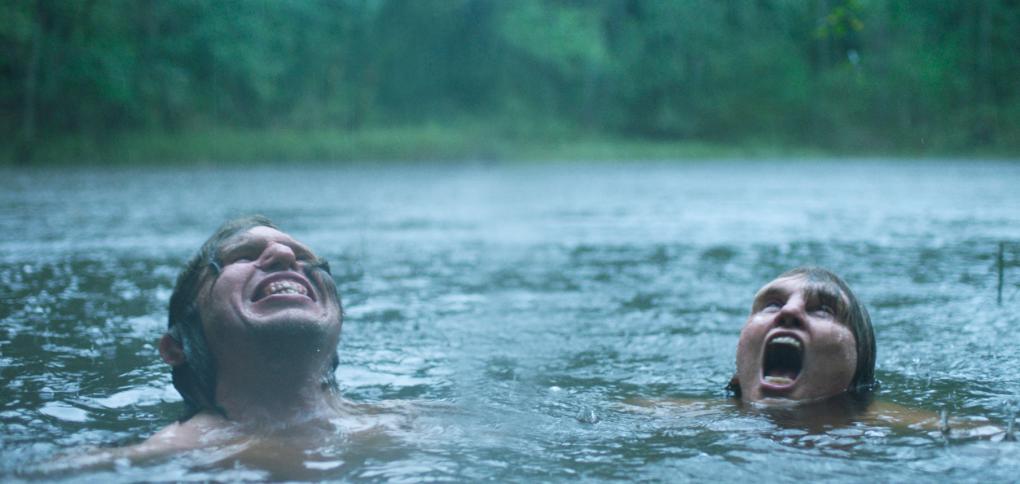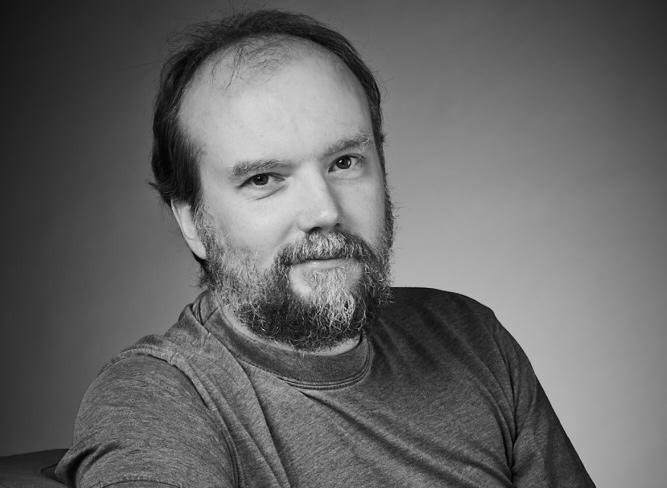
When a director asks VFX supervisor Peter Hjorth if he can do a specific visual effect, he always answers, "I can do anything." It’s just a matter of time and money. For the same reason, he never leaps uncritically at every idea that comes along.
"I might ask the director whether the effect is really necessary and what the artistic idea behind it is. The worst thing is if I myself get too awestruck about all the cool stuff you can do on the computer. That leads to some pretty bland films," says Hjorth, whose work as VFX supervisor on a film runs the gamut from development to post-production.
As the 48-year-old special effects wizard sees it, his finest task is supporting the director’s vision and making sure that the money is spent on the right things. That strategy has made him a hotly sought-after VFX supervisor in Danish films and European arthouse productions.
From his early days in the 1990s, doing video post-production for TV and advertising, Hjorth has worked regularly with Lars von Trier since 'Dancer in the Dark' in 2000, as well as with other prominent Danish directors like Thomas Vinterberg, Anders Thomas Jensen, Susanne Bier, Nikolaj Arcel and Nicolas Winding Refn.
Winning a European Film Award last year for Ali Abbasi’s Swedish-Danish 'Border', Hjorth is currently putting the finishing touches on Lorcan Finnegan’s Irish-Belgian-Danish sci-fi thriller 'Vivarium', which will have its world premiere in Critics' Week at Cannes. The feature is supported by the Danish Film Institute's minor co-production scheme.

Striking the right balance between artificial and natural
Hjorth describes his work on 'Vivarium' as "really hard." The film is set in a constructed universe, with a young couple, played by Jesse Eisenberg and Imogen Poots, trapped in a newly built, unreal-seeming housing complex.
"Creating something that looks artificial is almost the worst thing you can ask a visual effects supervisor to do. Especially one like me who is so into making the effects look natural. Striking the right balance was hard, being inside an artificial universe that doesn’t look like a computer game," he says. With production designer Philip Murphy and the rest of the visual team, he played around with the degree of patina on the buildings and had the lawn painted in places to make the artificial grass look more real.
The effort reveals how important it is for Hjorth to get involved early on in the process, here on 'Vivarium' to assess how many buildings it would make sense to actually build rather than copying them digitally. Although "computers can do anything" these days, Hjorth makes a point of keeping the effects physical as far as possible.
"We have a scene in 'Vivarium' where the sidewalk rises up. When you read the script, your first thought is to make the whole thing computer-generated. After all, how do you bend concrete? Then we realised we could cast it in latex and lift it with a wire. We added some cracks and dust in post to make it look dry and hard. And I shot some extra footage of slime on a blue-screen to use for the transition," Hjorth says.
Even with computer-generated imagery, Hjorth often builds a physical model as well. Making decisions during the physical construction gives the team a goal to work towards, rather than doing things "a thousand times" over on the computer. "Spending a day nerding out on some asphalt is generally more effective than having a whole team nudging the computer to make real-looking asphalt," he says.
Simple means rather than the latest effects
Hjorth prefers to work on European art films, because of the flat hierarchy and closer working relationship with the director, and because he likes that kind of film and wants to help realise the director’s concept in the best possible way – as a rule, using simple means rather than the latest effects. He likes the creative work of making the resources match the artistic vision, and he does not shy away from challenging the director and making them explain the point of a specific effect.
"I actually think it’s more respectful to say what you think as a specialist, rather than just acquiescing and leaving the director to their own devices," he says.
In general, Hjorth likes to keep sight of the big picture and not get lost in details. This is also where films on arthouse budgets have something to gain.
"I make a virtue out of leaving some things alone. There’s no reason to spend money on a corner that no one will look at anyway. We can put more shots into the film instead. At the end of the day, that gives the audience a better experience."
If, on top of that, the audience leaves the theatre with a new thought or idea, he couldn’t ask for more.
"It’s a meaningful thing to use all the amazing stuff we can do visually to make films that change something in the audience. For me, that’s the whole reason for making films. Everyone I work with shares that passion. What’s more, the people I work with most closely get a kick out of adjusting the knobs to make the impossible work and magic happen."

